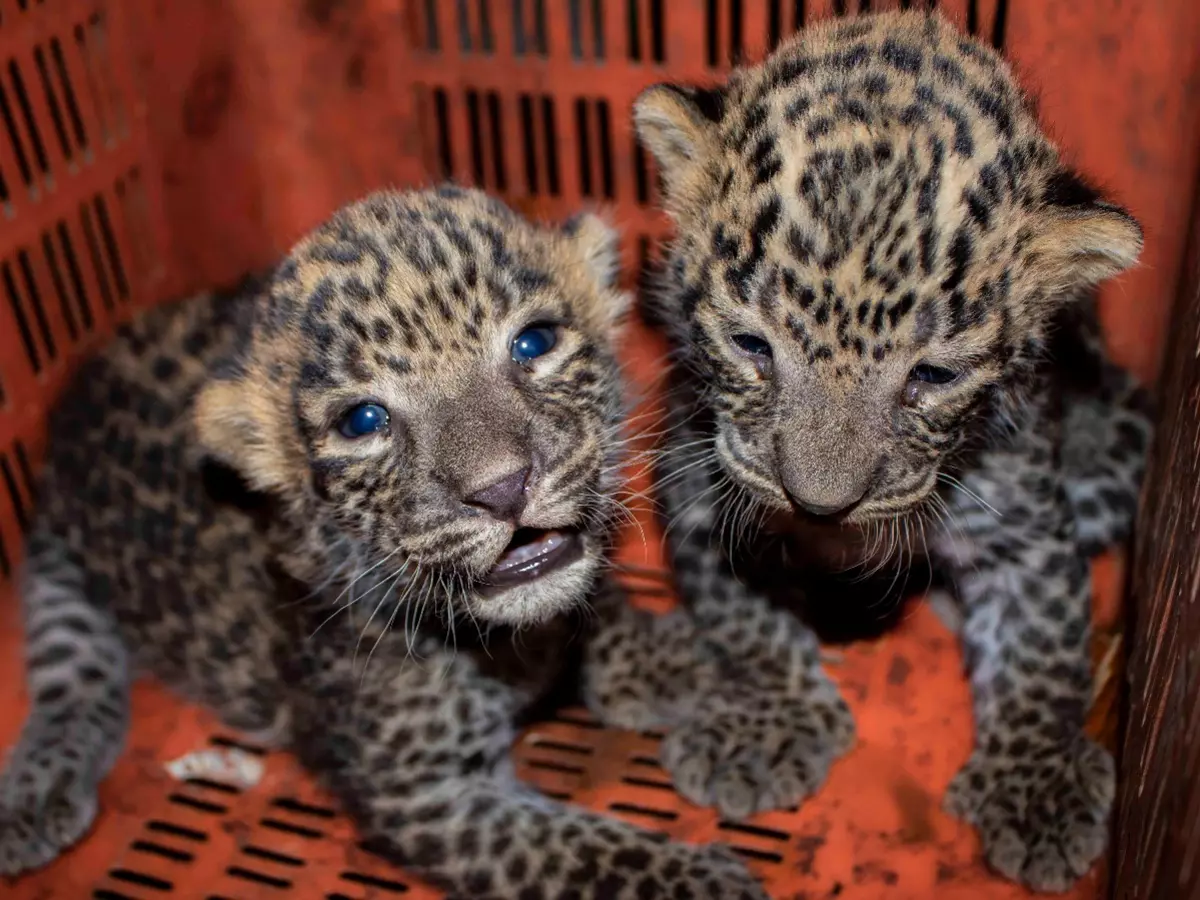12 Leopard Cubs Reunited With Mothers After They Were Found From Maharashtra Sugarcane Fields
In a recent incident, sugarcane farmers discovered a pair of 45-day-old leopard cubs in Otur village located Junnar taluka in Pune district, Maharashtra. The cubs were safely reunited with their mother in a successful operation carried out by Wildlife SOS and the Forest Department.

It is still the sugarcane harvest season in Maharashtra and it is also that time of the year leopards give birth to their offspring.
Female leopards often stray into sugarcane fields and rely heavily on the tall crop to shield their offspring from predators and human intervention.
So it is not unusual for farmers to find leopard cubs from their fields during the harvest.
This year since the harvest season began in January, an NGO, Wildlife SOS has rescued 12 such cubs and help them reunite with their mothers.
 Wildlife SOS
Wildlife SOS
What happened?
In a recent incident, sugarcane farmers discovered a pair of 45-day-old leopard cubs in Otur village located Junnar taluka in Pune district, Maharashtra. The cubs were safely reunited with their mother in a successful operation carried out by Wildlife SOS and the Forest Department.
What started out as a normal day for farmers in Otur village located in Junnar taluka in Maharashtra, soon turned into an action-packed afternoon after they spotted two leopard cubs amidst a sugarcane field.
 Wildlife SOS
Wildlife SOS
This incident took place just a day after three leopard cubs were safely rescued and reunited with their mother in a neighbouring village by Wildlife SOS and the Forest Department. Forest officers brought the cubs to the Wildlife SOS Leopard Rescue Center for a thorough health examination. They were identified as two males, estimated to be 45-days-old.
Cubs implanted with micro chip
Wildlife SOS veterinary doctor, Dr. Nikhil Bangar implanted each cub with a microchip consisting of a unique identification number, fitted near the tail region. As per the guidelines issued by the Ministry of Environment, Forest & Climate Change (MoEFCC), animals that are in captivity or are being released back into the wild have to be microchipped, as it helps monitor their range and movement patterns. This also helps identify individuals during conflict under the human-animal conflict.
 Wildlife SOS
Wildlife SOS
Post-checkup, the team arranged for the cubs to be reunited with their mother and took them back to the field where the farmers had found them. They were carefully placed in a safe box and remote-controlled camera traps were installed to document the reunion process.
Camera traps captured the mother leopard slowly approaching the field around midnight. On reaching the crate, she dexterously used her paws to carefully tip it over. After scrutinizing her cubs, the content mother delicately picked them up one after the other and relocated to a safer location.
 Wildlife SOS
Wildlife SOS
¡°Reunions often spread over a few hours and even days, depending on where the mother is, and whether or not she can find her way back. However, this mother leopard was already looking for her cubs as she was there in a matter of 30 minutes. These young cubs will eventually play an instrumental role in supporting a healthy population of leopards in Maharashtra,¡± Dr. Nikhil Bangar, Wildlife Veterinary Officer, Wildlife SOS, said.
"For these two cubs, the separation from their mother could have easily meant death in the wild or a life in captivity. To avoid situations like that, we undertake every effort to make such rescue and reunion operations possible,¡± Kartick Satyanarayan, Co-founder and CEO of Wildlife SOS, said.
